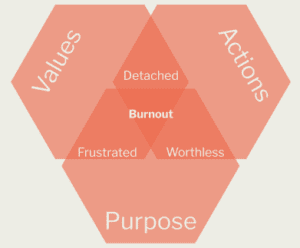
Transforming Work Culture: Combating Bullying in the Workplace
Bullying, once associated with schoolyards, has found a disturbing foothold in the professional realm, eroding the very foundation of productive and healthy work environments. As leaders, employees, and advocates for change, it is imperative that we confront and address bullying at work head-on. In this thought leadership article, we will delve into the detrimental effects of workplace bullying, explore the multifaceted nature of the issue, and discuss strategies to foster a culture of respect, inclusivity, and empowerment.
The Escalating Threat of Workplace Bullying
Workplace bullying is a pervasive problem that affects individuals across industries, levels of seniority, and roles. It involves the repeated, intentional mistreatment of an employee, often manifesting as humiliation, intimidation, or the undermining of their work and contributions. The consequences of workplace bullying are far-reaching:
- Mental and Emotional Toll
Victims of bullying experience heightened stress, anxiety, and depression, which can lead to reduced productivity, absenteeism, and even physical health issues. Moreover, the emotional toll of bullying can extend beyond the workplace, impacting personal relationships and overall well-being.
- Diminished Work Environment
A culture tainted by bullying erodes trust, cooperation, and collaboration. It fosters an environment of fear and disengagement, where creativity and innovation are stifled, and individuals are reluctant to voice their opinions or share ideas.
- Talent Drain
Talented employees who are subjected to bullying often seek employment elsewhere, resulting in a loss of valuable human capital. Organisations that fail to address bullying risk losing skilled professionals who seek workplaces that prioritise their well-being.
The Multifaceted Nature of Workplace Bullying
Workplace bullying takes various forms, ranging from overt acts of aggression to subtle manipulation. It’s vital to recognize these manifestations to effectively combat this issue:
- Verbal and Physical Abuse
Direct verbal abuse, insults, and shouting constitute overt forms of bullying. Physical intimidation or threats further contribute to a hostile work environment.
- Social Exclusion and Isolation
Bullying can also be subtle, such as excluding individuals from meetings or important conversations, withholding information necessary for their tasks, or creating a sense of isolation.
- Cyberbullying
In the digital age, bullying has expanded to online platforms. Cyberbullying includes sending harmful messages, spreading false information, or making derogatory comments about colleagues.
- Micromanagement and Undermining
Bullying can be covert, like constant micromanagement or undermining a person’s work by taking credit for their ideas or sabotaging their projects.
Strategies to Combat Workplace Bullying
Creating a safe and supportive work environment requires proactive efforts from both leaders and employees. Here are strategies to combat workplace bullying:
- Leadership Commitment
Leaders must take a stand against bullying by enforcing strict anti-bullying policies and fostering a culture of respect and inclusivity. They should lead by example, demonstrating the behaviour they expect from others.
- Education and Training
Regular training sessions on recognising and addressing bullying can empower employees to identify such behaviour and provide them with the tools to intervene or report incidents.
- Open Communication Channels
Establish confidential channels for employees to report bullying without fear of retaliation. Encourage open dialogue and make it clear that all concerns will be taken seriously.
- Promote Empathy and Inclusion
Foster a culture of empathy and inclusion, celebrating diversity and different perspectives. Encourage collaboration and teamwork to break down barriers that fuel bullying behaviour.
- Consequences for Perpetrators
Implement clear consequences for bullying behaviour. Disciplinary actions should be consistent and transparent, demonstrating the organisation’s commitment to eradicating bullying.
Conclusion
Workplace bullying is a scourge that erodes organisational culture, hampers productivity, and leaves lasting emotional scars on its victims. By addressing this issue proactively and promoting a culture of respect, inclusivity, and empathy, we can transform workplaces into thriving environments where every individual feels valued and empowered. Let us collectively work towards a future where bullying has no place, and where collaboration, innovation, and personal growth are nurtured within a culture of compassion and equality.
Discover our programs that can help you transform your working culture, deliver results that matter.













































